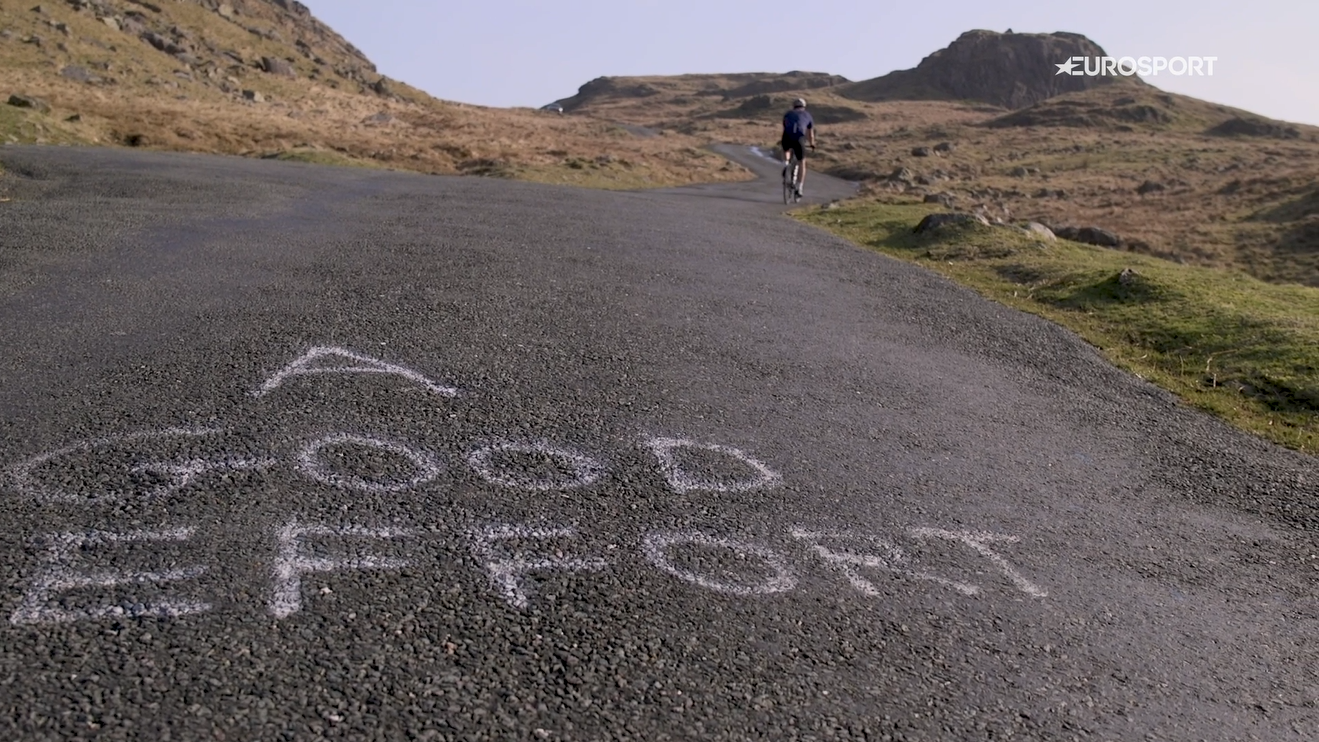Cycling feature: Why Hardknott Pass was the ultimate test for the Average Man
:focal(167x134:169x132)/origin-imgresizer.eurosport.com/2021/04/12/3041129-62378324-310-310.png)
Updated 26/12/2020 at 16:13 GMT
We all know what a steep hill looks like. But a 33% climb is a different beast.
Average Man Hardknott Pass
Image credit: Eurosport
Hardknott Pass in the English Lake District is a cycling climb with a fearsome reputation.
Day-trippers in their cars take to the road just to see how steep it really is… and for the ones who become wedged on the hairpins that soon becomes an idea they regret.
Before you even get out of the trees at the foot of the climb the gradients reach into the high teens. To put it into context, that is steeper than the maximum gradient of Alpe d’Huez, which peaks at 13%. And you’ve barely even started at that point.

The true climb of Hardknott Pass is just 2.2km long. The scenery is stunning, and as far as cycling climbs go that is not a long one. But over the course of that 2.2km the average gradient is 14%. Yes, that’s the average gradient.
Inside the first kilometre there are a handful of switchbacks that reach 25%, which is enough to kill off many cyclists. And then the road then ‘eases off’. Gradients are still in double figures, but compared to what has just gone it seems relatively flat and brings the heart-rate down from dangerously high.
Then comes the segment that makes Hardknott so feared. The majority of the final kilometre is eye-wateringly steep, with one 300m section that averages over 21% and reaches 33%. Even the very best cyclists are at their limit on gradients like that. It doesn’t matter what line you take, there is no escaping a road that steep.
You get the idea, Hardknott Pass is very steep. So where better to send Eurosport’s Average Man to test him out?
Watch Average Man vs Hardknott Pass
/origin-imgresizer.eurosport.com/2019/05/10/2583859-53575890-2560-1440.jpg)
Average Man to Superman: Are six weeks of training enough to conquer England’s steepest climb?
Where is Hardknott Pass?
The climb is situated between Eskdale and the Duddon Valley in the English Lake District. The climb proper begins by a warning sign and phonebox next to the Jubilee bBridge.
Wrynose Pass is in close proximity and keen cyclists often take on the two climbs together. Both feature in the infamous Fred Whitton Challenge, an annual sportive that includes 3700m of elevation gain in a 183km route.
What they said?
Oliver Bridgewood, GCN presenter and cycling journalist:
It’s one of the hardest climbs going. The aim with Hardknott is just not to walk, doesn’t matter how hard you get up just try not to walk. It’s savage.
Joe Perkins, Cycling Weekly journalist:
It’s an absolute beast. I don’t think there’s a riding style that suits this climb. It’s pretty much just try and get up it.
Harry Berger, owner of the nearby Woolpack Inn:
It doesn’t matter how many circles you put on a map, you don’t realise how steep it is.
Jonny Smith, motoring journalist:
Hardknott Pass is the Everest of roads.
Tom Bennett, Eurosport's Average Man:
It's hard to describe how steep it is right from the start. My whole body shut down, I've never experienced anything like it.
-- Eurosport's Average Man is digital editor Tom Bennett. Training was organised by Claire Steels, a former duathlon World Champion and rider for the Sopela Women's Team. Steels runs Steels Fitness, a fitness business that offers personal training, fitness retreats and online fitness programmes. Physiological profile testing was carried out by St Mary's University in Twickenham, who can provide tests for anyone from casual sport participants to Olympic athletes. The road bike used in the climbs in this feature was supplied by Decathlon UK.
Scan me
Related Topics
Share this article
Advertisement
Advertisement